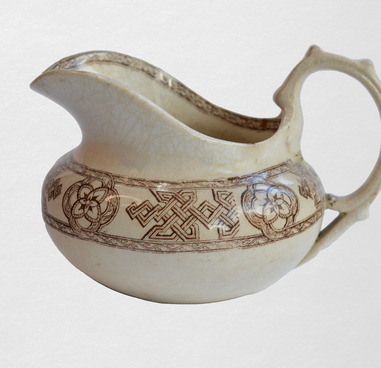At the beginning of the last century, a sewing machine was of great value, because only the wealthiest people could buy it. In a bride’s dowry, a sewing machine was considered a fortune. It was easier and quicker to make clothes and housewares by sewing machine, and also it was possible to do sewing work and make good money for it.
The history of the sewing machine goes back several centuries. For the first time in the XIV century, the Dutch began to use a device that sewed two canvases together. It appeared in the workshops for sewing sails. After years, many inventors tried to develop a mechanical device for sewing, but not all of the machines created were put to practical use.
A turning point in the history of the sewing machine was the inventions of two Americans-Elias Howe and Isaac Singer. In 1845 Elias Howe obtained a patent for a sewing machine with a lockstitch. Although, it was difficult to work on this machine because the needle moved horizontally, and the sewn fabrics were located in a vertical plane. The sewing machine of another American inventor Issac Singer was the most advanced and popular all over the world.
He placed the shuttle horizontally, and the thread did not get tangled. The inventor also made a special table for the fabric and a sewing foot that pressed it so that the seam was continuous. Besides this, Singer set up a foot pedal for the power mechanism of the sewing machine, so it became possible to work on the fabric with two hands. These innovations became the basis of the design of the sewing machine for decades.
The partnership “I. M. Singer & Co” opened the factory for the production of sewing machines in 1854 in New York. And in 1897, a Russian branch of the company was established in Podolsk with a Russified logo “Singer” and the inscription “Supplier of His Imperial Majesty’s Court”. From 1904 to 1914, the Podolsk plant produced about 600 thousand sewing machines of various classes.
In Russia, in the last third of the XIX century, the Popov Trading House was also an important player in the sewing machine market. In the workshops of the merchant Popov, sewing machines were produced under the brands “Singer”, “Popov Spouses”, " Singer and Popov”. They were popularly called “popovki” and “beloruchki” (because of the white ceramic drive handle).
The history of the sewing machine goes back several centuries. For the first time in the XIV century, the Dutch began to use a device that sewed two canvases together. It appeared in the workshops for sewing sails. After years, many inventors tried to develop a mechanical device for sewing, but not all of the machines created were put to practical use.
A turning point in the history of the sewing machine was the inventions of two Americans-Elias Howe and Isaac Singer. In 1845 Elias Howe obtained a patent for a sewing machine with a lockstitch. Although, it was difficult to work on this machine because the needle moved horizontally, and the sewn fabrics were located in a vertical plane. The sewing machine of another American inventor Issac Singer was the most advanced and popular all over the world.
He placed the shuttle horizontally, and the thread did not get tangled. The inventor also made a special table for the fabric and a sewing foot that pressed it so that the seam was continuous. Besides this, Singer set up a foot pedal for the power mechanism of the sewing machine, so it became possible to work on the fabric with two hands. These innovations became the basis of the design of the sewing machine for decades.
The partnership “I. M. Singer & Co” opened the factory for the production of sewing machines in 1854 in New York. And in 1897, a Russian branch of the company was established in Podolsk with a Russified logo “Singer” and the inscription “Supplier of His Imperial Majesty’s Court”. From 1904 to 1914, the Podolsk plant produced about 600 thousand sewing machines of various classes.
In Russia, in the last third of the XIX century, the Popov Trading House was also an important player in the sewing machine market. In the workshops of the merchant Popov, sewing machines were produced under the brands “Singer”, “Popov Spouses”, " Singer and Popov”. They were popularly called “popovki” and “beloruchki” (because of the white ceramic drive handle).



